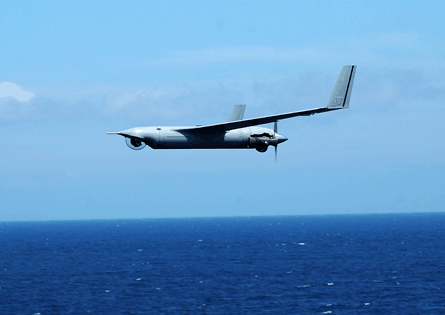Three weeks after a senior acquisition official said a decision on a small tactical unmanned aircraft system (STUAS) purchase was "imminent", the US Navy has confirmed that a contract award has been further delayed.
The year-long source selection process to replace Boeing-operated ScanEagle systems with a larger, military-operated aircraft is now expected before October.
Capt J R Brown, STUAS programme manager, credits the latest delay to taking extra vigilance with taxpayer dollars.
"Discussions have been, and continue to be, required to understand and clarify industry's proposed solutions to meet the warfighter's requirements," Brown says.
The latest setback extends an already three-year-old process to reach contract award.
In August 2007, the US Marine Corps nearly selected a contractor for what was then called the Tier II UAS. But the navy halted the process to merge the requirement with the ship-based STUAS.
Nearly three years later, the USN continues to evaluate four submitted proposals, which include the AAI Aerosonde Mk 4.7, Boeing/Insitu Integrator, Raytheon/Swift Engineering KillerBee-4 and the General Dynamics/Elbit Systems UAS Dynamics joint venture's Storm.
Despite the delay, US troops have not gone without a STUAS capability. Since 2004, the US military has purchased Boeing/Insitu's smaller ScanEagle system (below) as a contractor-operated service.
 |
|---|
© Boeing/Insitu |
As the STUAS acquisition process drags on, the navy plans to extend the contract. However, it intends to make Boeing compete for the follow-on services deal.
That strategy has created a new version of the STUAS competition, attracting interest from all four bidders. According to industry sources, the navy is likely to award an indefinite-quantity/indefinite delivery contract, requiring several bidders to compete for task orders on an individual basis.
However, that acquisition process also may be running late. The contract is scheduled to be awarded in October, but so far the navy has not issued a request for proposals.
Meanwhile, the service also has started pursuing alternatives to the original STUAS strategy, which envisaged selecting only a single supplier. It has now inserted funds in the fiscal year 2010 budget to also study options for a "STUAS Lite" system.
The STUAS Lite concept is aimed at equipping cruisers and destroyers. The ships currently use a torpedo magazine to house the ScanEagle equipment, but that space is too small for the STUAS system, which could be up to five times larger by volume.
Source: Flight International
















